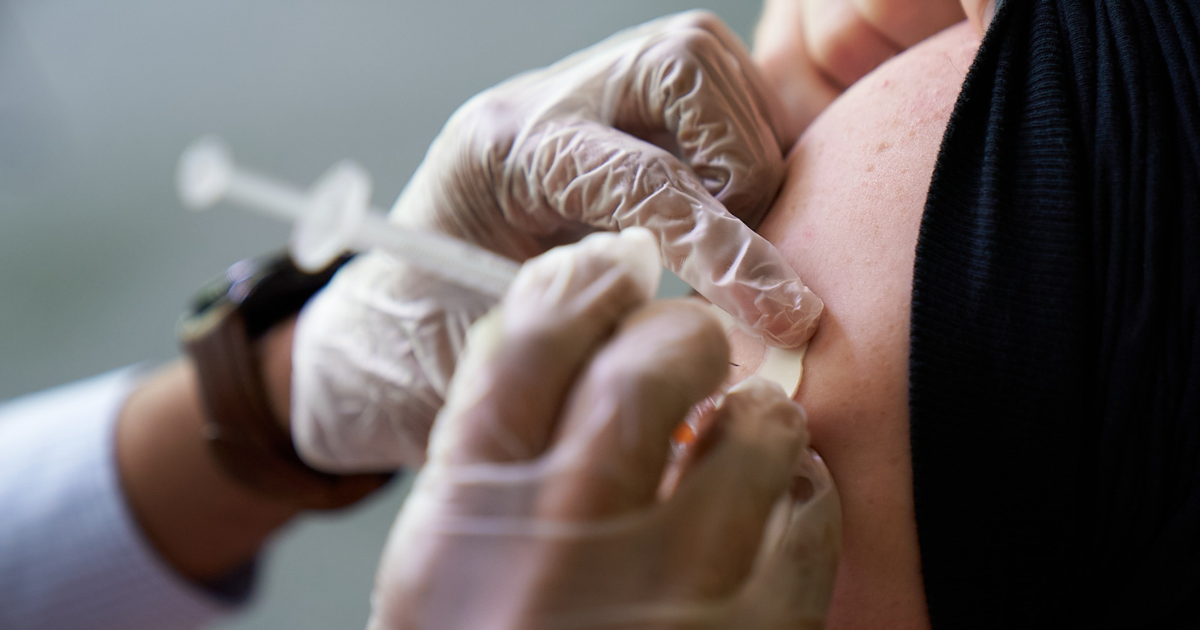La Salle University
Encouraging the vaccine-hesitant to become vaccinated
Media play an important role in driving higher vaccination rates, says La Salle communication professor.
This year, COVID-19 vaccines have been offered at unorthodox places. Museums became temporary vaccine clinics. So did places of worship, like mosques and churches. Sports teams even gave fans a shot at free tickets—if they were willing to get their shots.
Convenience has encouraged the vaccine-hesitant to roll up their sleeves, said Kelly Madden Daily, Ph.D., an associate professor of communication at La Salle University. Daily studies the media’s influence on health decisions, including the decision to get vaccinated.
Yet for all those unusual locales, Daily said, vaccine availability through primary healthcare providers remains as important as ever.
 “Study after study has demonstrated that a recommendation from a healthcare provider and the availability of the vaccine at the provider’s location are critically important to a person’s vaccination decision,” she said. “Offering vaccines in convenient places is essential, as well. … Vaccination is a one-time decision, and it’s necessary to give people multiple opportunities to say yes.”
“Study after study has demonstrated that a recommendation from a healthcare provider and the availability of the vaccine at the provider’s location are critically important to a person’s vaccination decision,” she said. “Offering vaccines in convenient places is essential, as well. … Vaccination is a one-time decision, and it’s necessary to give people multiple opportunities to say yes.”
Now that Pfizer-BioNTech’s COVID-19 vaccine has received full FDA approval, we asked Daily about measures that will support higher vaccination rates:
Overall, has media coverage influenced higher vaccination rates?
Daily: “Media coverage that has emphasized the safety and effectiveness of the available COVID-19 vaccines likely has played a significant role in driving viewers, listeners, and readers to get vaccinated.”
Vaccination cards are being used as evidentiary material to grant access to concerts and games. Will that encourage people to get vaccinated?
Daily: “Requiring vaccination cards could be motivating if it prevents people from doing the activities that their friends and family want to do. For example, if I’m an unvaccinated college student and all my vaccinated friends can go to a game or a concert and I’m left behind, I might go ahead and make my vaccine appointment. People requiring friends and family to show their vaccination card to attend weddings or visit newborn babies can be motivating, as well. I just received a wedding invitation that asked unvaccinated people to celebrate at home.”
What has the media done right in its coverage of vaccination rates and the availability of the vaccine?
Daily: “News about increasing vaccination rates can be powerful. We know that perceptions of norms influence behavior. If I hear, for example, that more and more people around me are getting vaccinated, I will be more inclined to get vaccinated. On the other hand, if I hear that people around me, or people like me, are getting vaccinated at lower rates, that might reinforce my decision to wait to get vaccinated. There has been research around the idea of competing norms. For example, media sources generally communicate that getting the vaccine is a good thing to do. But some people are also consuming news content indicating a substantial number of people who live near them or are similar to them are not getting vaccinated, which can be perceived as the behavior being disapproved of by those around them. That combination can create a mixed message. What should I do? That conflict can often lead people to feel stuck and to avoid a decision, which is not desirable when the goal is to get more people vaccinated as soon as possible.”
“We all have to keep trying, keep having those conversations and approaching those conversations with empathy and compassion, even though that can be difficult,” Kelly Madden Daily, Ph.D.
What can journalists do moving forward?
Daily: “Journalists are beginning to tell stories of people who regret not getting vaccinated. These stories highlight people who did not get vaccinated and either got very sick or died. Stories can be powerful motivators in the decision to get vaccinated, especially if a reader or listener can identify with the person in the story in key ways. I believe more stories of people changing their mind about getting vaccinated are needed. Stories about people being saved from illness by the vaccine could be very motivating, especially narratives that describe the unvaccinated people around them who were not saved. People need motivation to go against the anti-vaccination norms that permeate their community.”
What else can be done to drive higher vaccination rates?
Daily: “We know from recent research that friends and family are key to convincing people to get vaccinated. Training or guiding people about how to have one-on-one conversations with those around them to get vaccinated is important. It can be difficult to approach a conversation about a person’s vaccination status and then to carry a conversation that answers their questions and persuades them to get the shot, so more education about how to do so will be key to increasing rates. We all have to keep trying, keep having those conversations and approaching those conversations with empathy and compassion, even though that can be difficult.”
—Christopher A. Vito
